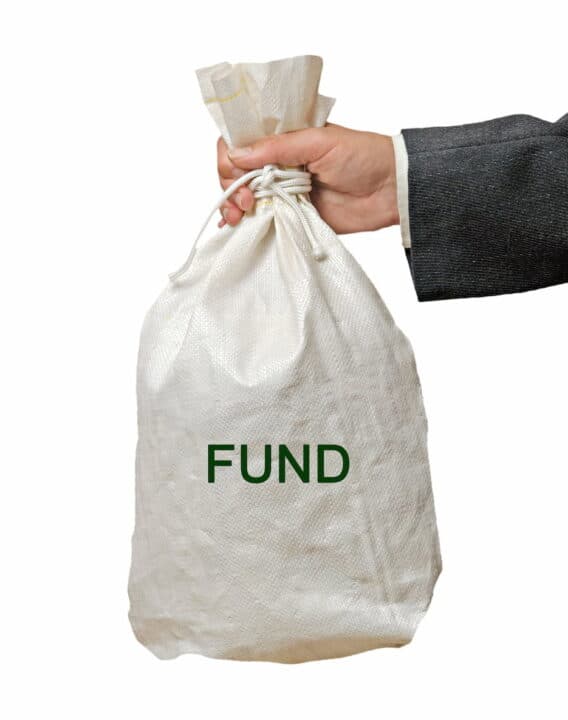Financially planning, saving and investing for retirement is essential to ensure a comfortable and financially secure retirement. The majority of Canadians choose to do this by making monthly or annual payments to a Registered Retirement Savings Plan (RRSP). The RRSP is then converted to a Registered Retirement Income Fund (RRIF) upon retirement, or before the age of 71.
An RRIF enables your savings and investments to grow tax-free. Only when RRIF withdrawals are made will you be subject to tax. As a result of factors such as a lower overall income during retirement, RRIF withdrawals are likely to be subject to lower tax. This helps to protect your balance.
RRIF withdrawal rates are used to calculate the minimum withdrawal amount each year. The main factor that is used to calculate the annual RRIF withdrawal minimum is the account holder’s age at the beginning of the year. This is then used to calculate the minimum withdrawals that need to be made. The account holder can choose to receive regular monthly payments from their RRIF, or less regular payments, for example once or twice a year.
Today, we are going to look at the RRIF minimum withdrawal rates. We will also look at how to calculate the minimum amount you need to withdraw from your retirement fund each year.

Registered Retirement Income Fund (RRIF)
Those who are employed or self-employed in Canada usually save for retirement through a Registered Retirement Savings Plan (RRSP). Annual contributions are made to ensure a financially comfortable retirement. However, all the funds in your RRSP must be withdrawn by the last calendar day of the year you turn 71. If you choose to withdraw your RRSP balance in one lump sum, you will have to pay a withholding tax of up to 30%, as well as being subject to marginal tax rates.
Luckily, there is a way you can protect your savings and avoid a huge tax bill. This involves converting your RRSP into an RRIF. A key difference between the best RRSP and an RRIF is that you cannot make any additional contributions to your RRIF balance. An RRIF is designed to provide you with a regular retirement income.
You can transfer assets to an RRIF from a number of sources. These include your RRSP, your Registered Pension Plan (RPP) or a Deferred Profit Sharing Plan (DPSP). You can also transfer assets from another RRIF that is owned by you or your deceased spouse. An RRIF can be opened at any time before the last day of the calendar year that you turn 71 years old.
A number of different investment types can be held in an RRIF. These include:
- Cash
- Guaranteed Investment Certificates (GICs)
- Mutual Funds
- Exchange-Traded Funds (ETFs)
- Stocks
- Bonds

The carriers of RRIFs can be banks, insurance companies, trust companies and other financial intermediaries. RRIFs are also registered with the Canadian government. You can choose to have multiple RRIFs with different financial institutions.
Your savings will be tax-sheltered while they are held in your RRIF. This means your balance can grow on a tax-deferred basis. However, any withdrawal you make will be subject to tax. There is a minimum amount you must withdraw from your RRIF each year. However, there is no maximum withdrawal amount. The latest you are allowed to withdraw your first payment is the last calendar day of the year you turn 72.
RRIF Minimum Withdrawal Rules and Table
The year that you set up your RRIF has no minimum withdrawal amount. However, every year following this, there will be a minimum amount you are required to withdraw. The table below explains this in more detail:
Age (At the beginning of the year) RRIF Minimum Withdrawal (Percentage %)
| 65 | 4.00% |
| 66 | 4.17% |
| 67 | 4.35% |
| 68 | 4.55% |
| 69 | 4.76% |
| 70 | 5.00% |
| 71 | 5.28% |
| 72 | 5.40% |
| 73 | 5.53% |
| 74 | 5.67% |
| 75 | 5.82% |
| 76 | 5.98% |
| 77 | 6.17% |
| 78 | 6.36% |
| 79 | 6.58% |
| 80 | 6.82% |
| 81 | 7.08% |
| 82 | 7.38% |
| 83 | 7.71% |
| 84 | 8.08% |
| 85 | 8.51% |
| 86 | 8.99% |
| 87 | 9.55% |
| 88 | 10.21% |
| 89 | 10.99% |
| 90 | 11.92% |
| 91 | 13.06% |
| 92 | 14.49% |
| 93 | 16.34% |
| 94 | 18.79% |
| 95 and older | 20% |
How is the RRIF Minimum Calculated?
The RRIF minimum withdrawals percentage is calculated based on a number of different factors. This includes your age at the beginning of the year and the type of annuities that you hold in your RRIF. Generally, the RRIF minimum is calculated by multiplying the total market value of your RRIF by a “prescribed factor”.
As seen in the above table, this “prescribed factor” is your age, or the age of the younger spouse if you have a spousal RRIF. The formula for calculating the minimum withdrawal rate is 1 ÷ 90 (minus your age). For example, if you are 70 years of age, 90 – 70= 20. 1÷20 = 5.00%. This means you must withdraw 5% of your total balance the year you are 70.
So, if your RRIF is valued at $600,000, when you are 70 years old, a minimum amount of $30,000 must be withdrawn from your account.
If you have multiple RRIFs, the minimum withdrawals are calculated separately. Withdrawing money from RRIF does not cause a reduction in the amount you need to withdraw from your other RRIFs.
Can You Withdraw Less than the Minimum?
Under normal circumstances, it is not possible to withdraw less than the minimum amount. This figure is set in stone and cannot be altered. However, in extreme situations, the Canadian government may choose to change the minimum withdrawal amount. This may include times of economic difficulty or when the market conditions are particularly volatile.
For example, in 2020, the minimum amount that was required to be withdrawn was reduced by 25%. This was done to help reduce the impact of the coronavirus pandemic on the market value of hard-working Canadians’ retirement savings.

RRIF Minimum Annual Withdrawals
As demonstrated in the above table, the minimum annual withdrawal amount is a percentage of the total value of your RRIF. This percentage is calculated based on your age. You can choose to make withdrawals monthly, quarterly, semi-annually or annually. If you choose to make monthly withdrawals, these withdrawals will be added together to ensure you have withdrawn the minimum annual amount over the year.
RRIF Withholding Tax
When withdrawals are made from an RRIF, withholding will not be applied to the minimum income amount. You will only be subject to the withholding tax on any amount the exceeds your minimum withdrawal amount. If you make an RRIF withdrawal that exceeds the minimum amount, the tax will be withheld by the financial institution that handles your RRIF. For comparison, take a look at our article covering RRSP withdrawal tax.
This withheld tax will then be passed on to the government. The withholding tax varies depending on a number of factors, including the value of the withdrawal and the province you live in. For all provinces except Quebec, the withholding tax will be:
- $0-$5,000 = 10%
- $5,000-$15,000 = 20%
- More than $15,000 = 30%
However, all withdrawals that you make must be reported on your tax return every year. Even if the withdrawal falls within the RRIF minimum amount, you must still report it on your tax return. This will then be subject to the marginal tax rate – which is a combination of federal and provincial taxes. The tax you will be expected to pay on your withdrawals will depend on your tax bracket for that year.

At What Age Must an RRIF Be Closed?
Unlike an RRSP, RRIFs do not have a maximum age limit. Account-holders can continue to receive payments from their RRIFs until all funds are depleted or until they are deceased. If an account holder dies before the balance has been depleted, their nominated annuitant can have the remaining funds transferred to their RRIF, their RRSP, their PRPP (Pooled Registered Pension Plan) or their SPP (Specified Pension Plan). Alternatively, they can be used to purchase an eligible annuity.
The Bottom Line
An RRIF is a popular way to ensure a regular income during retirement. Contributions can be made to an RRSP throughout your working years, and this balance can be converted to an RRIF upon retirement. RRIF withdrawals must be made at least once per year, but you can choose to withdraw money as often as you want.
There is no maximum withdrawal amount but there is a set percentage for minimum withdrawals that must be adhered to each year. The main factor that determines this percentage is your age. The older you are, the higher the percentage of your balance that you need to withdraw in that year.